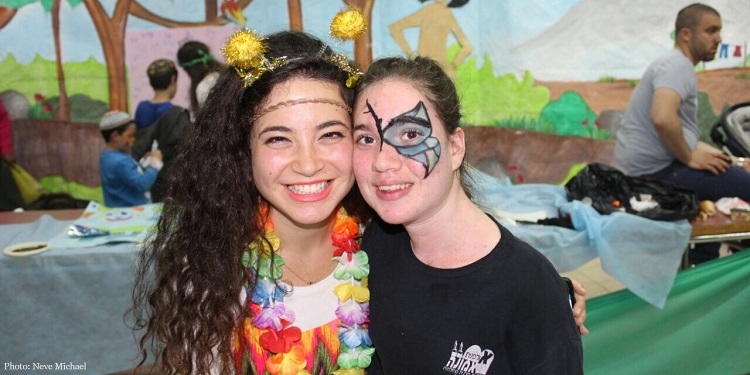Purim: Sadness to Joy, Grief to Celebration
The Fellowship | March 18, 2024

Every year, on the 14th of the Hebrew month of Adar, Jewish people around the world celebrate the holiday of Purim. This year Purim begins at sundown on Saturday March 23, and concludes in the evening the following day.
Purim celebrates the salvation of the Jewish people in the ancient Persian empire. The story of Purim is told in the biblical book of Esther, which is read aloud twice in the synagogue on the holiday, in the evening and in the morning.
During the reign of King Ahasuerus in the fourth century B.C.E., a wicked man named Haman became the prime minister. He decided that he wanted to murder all the Jews in the empire. He told the King that the Jewish people, a nation dispersed among all the other nations, had their own laws, did not follow the laws of the King, and should not be tolerated. The King told him to go ahead with his plan, and a date was set to murder the Jews – the 14th of Adar. Meanwhile, the King had just made a beautiful Jewish woman named Esther his queen after he had his first wife Vashti executed for not coming when he called her to show off her beauty at a party. The King did not know Esther was Jewish. Her cousin, Mordecai, who had raised her, warned her against sharing this information.
Thanks to some smart moves on the part of Queen Esther and Mordecai, Haman’s decree was overturned, and the Jews were saved. On the very day Haman had planned to murder them, the Jews in the Persian empire mobilized and killed the enemies who wanted to kill them, including the evil Haman and his ten sons. Thus, the day Haman had chosen to kill the Jews, the 14th of Adar, became a day of celebration for Jews everywhere – the holiday of Purim.
A Time to Celebrate
It says in the book of Esther that the month of Adar was transformed from a month of sadness to one of joy, from a month of grief to one of celebration. The Talmud says, “with the start of Adar, we increase joy.” What is this joy all about? In just a few words, Haman planned a genocide of the Jews, the decree was overturned, and their lives were saved. Of course, the Jews in the Persian empire celebrated! And we do too, no matter how many centuries have passed.
The holiday of Purim is celebrated by wearing costumes, eating festive holiday meals, giving charity, and bringing gifts of food to friends and neighbors. Carnivals, parades, and parties are often held on Purim. When the book of Esther is read in the synagogue, every time the name of the evil Haman is read aloud, the listeners use something called a ra’ashan (a noisemaker) to boo him and drown out his name. Purim is meant to be a lighthearted holiday, a day for silliness and fun. We are supposed to forget our troubles and celebrate. And not only on the holiday of Purim itself, but for the whole month in which the holiday appears!
Increasing Our Joy
This year there are two months of Adar, because it is a leap year, something that occurs seven times in a nineteen-year cycle. (The extra month of Adar keeps the lunar-based Jewish calendar aligned with the solar seasons.)
So, we have two months of Adar…how can we increase our joy, especially in such challenging times? As miraculous as the Purim story is, it is not easy to be joyful on demand. Life is not rosy for the Jewish people in 2024. Israel is at war, and anti-Semitism is rising sharply in the rest of the world. Our brave IDF soldiers continue to battle Hamas terrorists in Gaza, hundreds have fallen in battle, and many more have been wounded. At the same time, 134 Israeli hostages are still being held in Gaza.
Unfortunately, hard times are not something new for the Jewish people. Still, throughout the generations, Jews have always found ways to celebrate Purim and all the other Jewish holidays. Even in the darkest days, we continue to honor our traditions and our history.
I read a story about the young widow of a soldier who fell in battle a few months ago and who recently gave birth to a baby boy. Hundreds of people came to celebrate with her at the brit milah (circumcision ceremony) of her son. While grieving her husband, the young mother found joy in the new life that God had given her. Loss, celebration, sadness, happiness – life is a seesaw, always going up and down.
Yes, we can find joy even when the world looks so grey. Yes, we can forget our troubles at times, if not for a whole month, then for the holiday itself, and if not for a whole day, then for an hour or even just for a few minutes. We can put our problems aside to celebrate a holiday, a wedding, or the birth of a new baby. This is part of the strength of the Jewish people. We can find joy and meaning in our lives despite harsh realities. Purim is a holiday that not only gives us the opportunity to find joy, but also to create the joy ourselves.
Miriam Lock
March 2024
